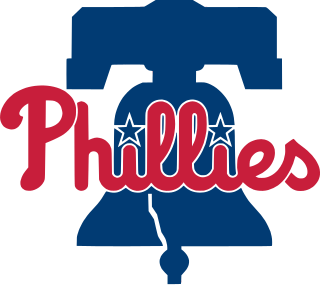
The Philadelphia Phillies are an American professional baseball team based in Philadelphia. They compete in Major League Baseball (MLB) as a member of the National League (NL) East division. Since 2004, the team's home stadium has been Citizens Bank Park, located in the South Philadelphia Sports Complex.

Shibe Park, known later as Connie Mack Stadium, was a ballpark located in Philadelphia. It was the home of the Philadelphia Athletics of the American League (AL) and the Philadelphia Phillies of the National League (NL). When it opened April 12, 1909, it became baseball's first steel-and-concrete stadium. In different eras it was home to "The $100,000 Infield", "The Whiz Kids", and "The 1964 Phold". The venue's two home teams won both the first and last games at the stadium: the Athletics beat the Boston Red Sox 8–1 on opening day 1909, while the Phillies beat the Montreal Expos 2–1 on October 1, 1970, in the park's final contest.

Robin Evan Roberts was a Major League Baseball starting pitcher who pitched primarily for the Philadelphia Phillies (1948–1961). He spent the latter part of his career with the Baltimore Orioles (1962–1965), Houston Astros (1965–66), and Chicago Cubs (1966). Roberts was inducted into the Baseball Hall of Fame in 1976. After his playing days, he coached the NCAA's South Florida Bulls baseball team for nine seasons, leading them to six conference titles.

National League Park, commonly referred to as the Baker Bowl after 1923, was a baseball stadium and home to the Philadelphia Phillies from 1887 until 1938, and first home field of the Philadelphia Eagles from 1933 to 1935. It opened in 1887 with a capacity of 12,500, burned down in 1894, and was rebuilt in 1895 as the first ballpark constructed primarily of steel and brick, and first with a cantilevered upper deck. The ballpark's first base line ran parallel to Huntingdon Street; right field to center field parallel to North Broad Street; center field to left field parallel to Lehigh Avenue; and the third base line parallel to 15th Street. The stadium was demolished in 1950.

Columbia Park or Columbia Avenue Grounds was a baseball park in Philadelphia. It was built in 1901 as the first home of the Philadelphia Athletics, who played there for eight seasons, including two games of the 1905 World Series.
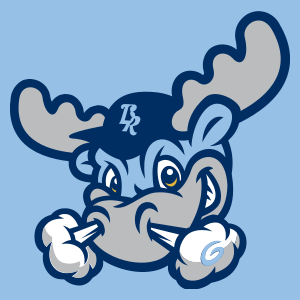
The Wilmington Blue Rocks are a Minor League Baseball team of the South Atlantic League and the High-A affiliate of the Washington Nationals. They are located in Wilmington, Delaware, and play their home games at Daniel S. Frawley Stadium.

Centennial Field is the name of the baseball stadium at the University of Vermont in Burlington, Vermont, and is the home of the Vermont Lake Monsters.
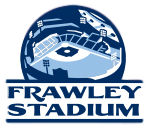
Daniel S. Frawley Stadium is a stadium in Wilmington, Delaware. It is primarily used for baseball, and is the home field of the Wilmington Blue Rocks minor league baseball team. The park was originally known as Legends Stadium when it was built in 1993. It was renamed in 1994 for Wilmington mayor Daniel S. Frawley, who had pushed for a return of the Blue Rocks. The field is named separately for Judy Johnson, a local Negro league baseball star.

The City Series was the name of a series of intracity baseball games played between Major League Baseball's Philadelphia Athletics of the American League and its predecessors, and the Philadelphia Phillies of the National League that ran from 1883 through 1954. While the games were officially exhibitions, they were a matter of prestige in Philadelphia and a long rivalry existed between the players, management, and fans.
The Wilmington Quicksteps were an 1884 late-season replacement baseball team in the Union Association. They finished with a 2-16 record and were managed by Joe Simmons. The team played their home games in Union Street Park in Wilmington, Delaware.
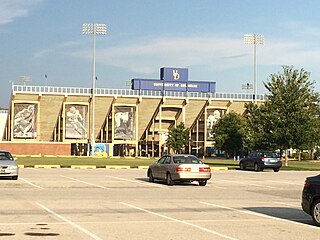
Delaware Stadium is a 22,000-seat multi-purpose stadium in Newark, Delaware, and is home to the University of Delaware Fightin' Blue Hens football team. The stadium is part of the David M. Nelson Athletic Complex, which includes the Bob Carpenter Center, Fred P. Rullo Stadium, the Fred Rust Ice Arena and the Delaware Field House.
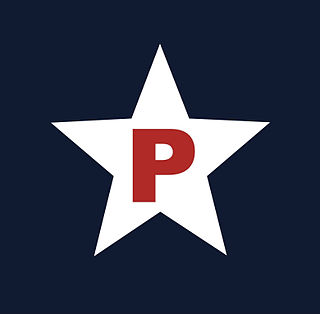
The Philadelphia Stars were a Negro league baseball team from Philadelphia. The Stars were founded in 1933 when Ed Bolden returned to professional black baseball after being idle since early 1930. The Stars were an independent ball club in 1933, a member of the Negro National League from 1934 until the League's collapse following the 1948 season, and affiliated with the Negro American League from 1949 to 1952.

Jack Russell Memorial Stadium is a stadium in Clearwater, Florida. It opened as Jack Russell Stadium in 1955. It was the spring training home of the Philadelphia Phillies Major League Baseball team from 1955 through 2003. Since 2017, it has been home to the Clearwater High School and St. Petersburg College baseball teams.
Robert Ruliph Morgan Carpenter Jr. was an owner and club president of the Philadelphia Phillies of American Major League Baseball. When he took command of the Phillies in November 1943 after his father and he purchased the franchise, the 28-year-old Carpenter became the youngest club president in baseball history. He became sole owner upon his father's death in 1949 and would serve as president of the Phillies until 1972, when his son succeeded him. The Carpenter family owned the Phillies from 1943 to 1981; they also were known as the Blue Jays from 1944 to 1949.
The 1955 Kansas City Athletics season was the 55th season for the franchise in MLB's American League, and the 1st season in Kansas City after playing the previous 54 in Philadelphia. The team won 63 games – only the fifth time in 20 years that they won more than 60 games – and lost 91, finishing sixth in the American League, 33 games behind the AL Champion New York Yankees.

Clearwater Athletic Field was a stadium in Clearwater, Florida. It was first used by professional baseball teams for spring training in 1923 and was the Phillies' first spring training ballpark in Clearwater. The grandstand sat approximately 2,000 and bleachers increased capacity to close to 3,000. Home plate was located on Pennsylvania Avenue, which ran south to north along the third base line, near Seminole Street. Left field ran parallel to Palmetto Street, and right field ran parallel to Greenwood Ave. The grandstand was destroyed by fire in April 1956.
The Wilmington Blue Rocks were a minor league baseball team based in Wilmington, Delaware, playing in the Interstate League from 1940 to 1952. The nickname "Blue Rocks" came from 73-year-old Robert Miller in a name-the-team contest. Miller lived in the Henry Clay section of the city, famed for its blue granite found along the Brandywine River. The current Wilmington Blue Rocks were named in 1992 for this original franchise.

The Philadelphia Athletics were a Major League Baseball team that played in Philadelphia from 1901 to 1954, when they moved to Kansas City, Missouri, and became the Kansas City Athletics. Following another move in 1967, the team became the Oakland Athletics, their current identity and location.












